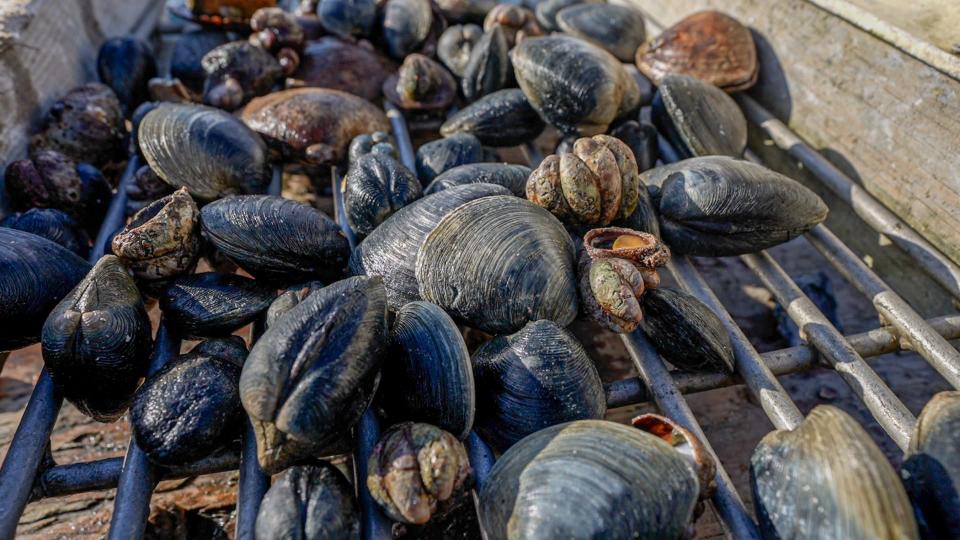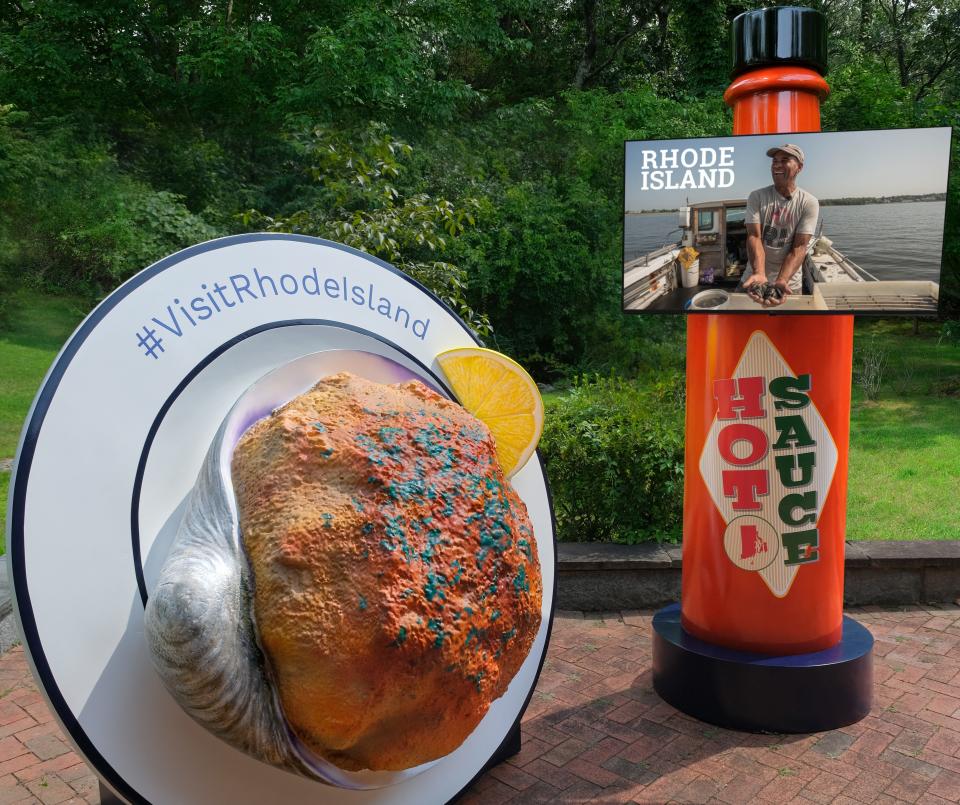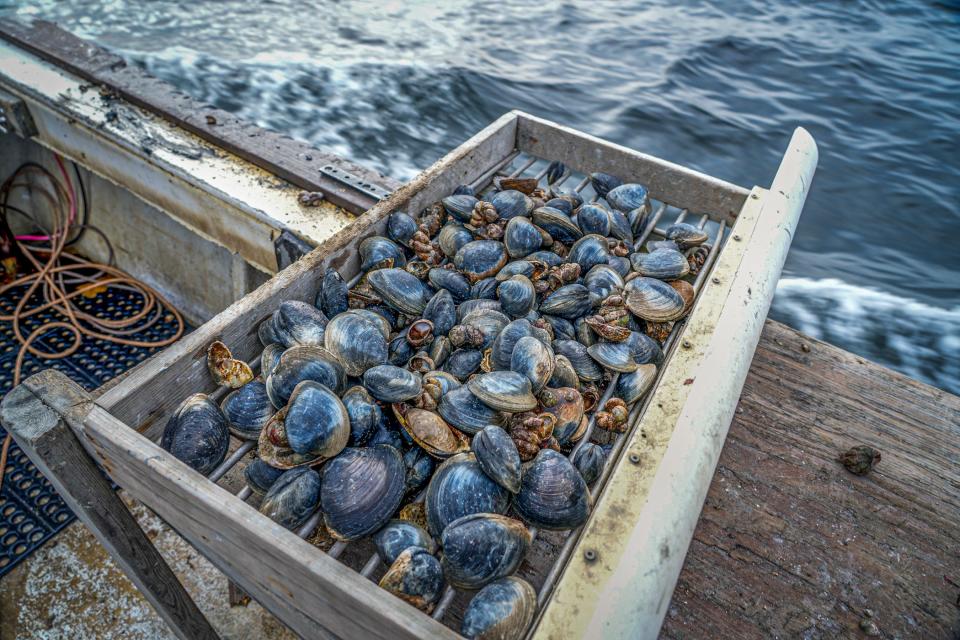What's a quahog? A quick guide to Rhode Island's iconic clam.
- Oops!Something went wrong.Please try again later.
PROVIDENCE – So you’re new to Rhode Island and you don’t know what a quahog is. Or maybe you’ve been here a while and you’re too embarrassed to ask.
Here's everything you need to quickly get up to speed and sounding like a true Rhode Islander:
What actually is a quahog?
First off, the northern quahog is the same thing as a hard-shell clam – a bivalve mollusk found in coastal waters from Nova Scotia to Florida. While it’s known as a hard clam just about everywhere else, it’s still called a quahog in the Ocean State.

Why do Rhode Islanders call clams 'quahogs'?
The name comes from the Narragansett word “poquauhock,” which Rhode Island founder Roger Williams defined as “horse fish” in his 1643 key to the native language. Over time, the word was shortened to quahog.
The Narragansetts and other native tribes would tread for quahogs, using their feet to feel for them along the shores of coves, inlets and salt ponds. They would eat the meat and use the shells for wampum, or beads that were traditionally used as ceremonial gifts and later as currency. The Latin name for quahog, mercenaria mercenaria, meaning money or wages, arose from this latter use.

Quahogs are clams, but not all clams are quahogs
Don’t confuse the quahog with the soft-shell clam, which is a separate species found in tidal flats that’s used to make steamers. It’s also different from the ocean quahog, another bivalve that’s larger, is found in deeper waters further from shore, and is harvested using dredges.
Adding to the confusion, quahogs come under different names depending on their size. There are littlenecks, the smallest ones with the most tender meat, good for eating on the half-shell; cherrystones, which are a little bigger and can also be eaten raw; then topnecks and the even larger chowders, which are both good for stuffies and chowders.

Unlike their ocean brethren, quahogs prefer intertidal areas in coastal estuaries where the water is less salty, where they can find shelter in the muddy bottom, and where there’s plenty of tiny marine plants for them to eat.
They prefer places like Narragansett Bay. At one time, shellfishermen equipped with long bullrakes or diving gear harvested a quarter of the nation’s quahogs from the body of water that cuts through the middle of Rhode Island.
But those days are long gone. Now, quahoggers, scientists, regulators and lawmakers are trying to get to the bottom of what’s causing a decline in the numbers of Rhode Island’s iconic clam.
More about the future of Rhode Island's quahogs
This article originally appeared on The Providence Journal: What is a quahog? What to know about RI's hard shell clams

